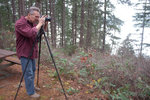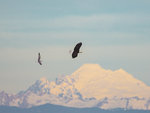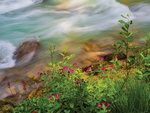How did Dabob Bay-based Keith Lazelle apply the lessons of written language to photography composition?
Perhaps the same way his wife, Jane Hall, applied what she learned as a social worker to …
This item is available in full to subscribers.
We have recently launched a new and improved website. To continue reading, you will need to either log into your subscriber account, or purchase a new subscription.
If you had an active account on our previous website, then you have an account here. Simply reset your password to regain access to your account.
If you did not have an account on our previous website, but are a current print subscriber, click here to set up your website account.
Otherwise, click here to view your options for subscribing.
* Having trouble? Call our circulation department at 360-385-2900, or email our support.
Please log in to continue |
|



How did Dabob Bay-based Keith Lazelle apply the lessons of written language to photography composition?
Perhaps the same way his wife, Jane Hall, applied what she learned as a social worker to help promote his career.
Lazelle went to college to earn degrees in literature and philosophy, but it was what he learned in comparing Eastern and Western cultures, as well as what he observed when he explored the wilderness of Washington state, that led him to transition into nature photography.
“Oriental aesthetics are very nature-based,” said Lazelle, who credited a book of photographic translations of 17th century Japanese haiku master Basho with helping to inspire his switch, along with his hiking excursions into the forests of his home state. “I felt frustrated, because I wanted to share what I was seeing, but words alone couldn’t capture what I was looking at.”
Lazelle and Hall’s relationship began as a purely platonic friendship, forged over their shared love of nature, as they climbed Mount Olympus in Washington together, and as just as they “totally fell in love with the Olympic Peninsula,” they also fell in love with each other.
“And I started to think, do I want to spend the rest of my life in an office, translating poetry, or do I want to be outdoors?” Lazelle said.
With the mentorship of Pat O’Hara Nature Photography of Port Angeles, Lazelle and Hall started their own nature photography business, with a 10-year deadline to make a living from his photography, or else fall back on their respective degrees.
“We knew it would take the two of us to make this work,” Hall said. ““He’s more of an introvert, and I’m more of an extrovert, so I set about following every lead I could, from shows in Seattle to corporate art collections.”
Hall met with architects and interior designers to display Lazelle’s photographs in their buildings, and around the eighth year of the business, she recalled how they “hit it big” with such big-name clients as Eddie Bauer, Alaska Airlines Magazine and the Nature Conservancy of Washington.
Lazelle designed and produced the first wall and engagement calendar in Eddie Bauer’s history in 1993 and 1994, while the Nature Conservancy and the Burke Museum sponsored a large exhibit of his work in 1999, titled “Washington’s Web of Life,” which toured the state for several years.
And in 2001, the Seattle Opera and Eddie Bauer collaborated to drape the opera’s entire gift shop in fabric, using a Lazelle image.
Along the way, Lazelle has been commissioned to furnish murals and other printed fabric displays for the Museum of History and Industry in Seattle and the Tulalip Tribes’ Hibulb Cultural Center in Snohomish County, as well as by the Hoh River Trust to produce what would become a book of photographs, “Fast Moving Water,” as well as an exhibit that traveled across the state through 2010, before being permanently installed at Peninsula College in Forks.
JOURNAL OF SEASONS
While Hall has treasured the relationships she’s built up over the years, with Lazelle Nature Photography’s laundry list of clients, she believes one of the business’ most important marketing tools has been its award-winning “Journal of Seasons” calendar, now selling its 30th and final year for 2020.
“The calendar became our portfolio, before we had a website,” Lazelle said. “It was how we got the work in front of people.”
The calendar also required the couple to set aside the fall of each year to sort through Lazelle’s landscapes, portraits and closeups of nature and wildlife, to select their dozen choice shots, before they took shipping orders.
And the calendar, like the business overall, came with its own deadline, although Hall admitted that she and Lazelle have been more lax in abiding by it.
“We told ourselves we’d do this for 25 years, but we still loved it too much to give it up,” Hall said. “We still love it now, but it’s the right time. We’re in our mid-60s, and we’re not retiring, but we are slowing down, and we’d like a little more freedom.”
Lazelle emphasized that he’s continuing to do print sales and commissions, and noted that giving up the calendar gives him more time to focus on those.
“Plus, I’d like to take trips in the fall,” Lazelle said. “I’ve never seen the leaves change in New England.”
And after all the calendars and all the clients, how would Lazelle account for the appeal of his own work, which Alaska Airlines Magazine described as “incredible colors (that) seem to expand beyond their frames, yet seem wholly contained, inviting further contemplation of the natural world”?
“It’s hard to put into words,” Lazelle said. “There can be a lot of chaos behind the camera, so you have to simplify each image to its essential core. It’s light, composition and color, but it’s also about the decisive moment, when you choose to take the picture.”
Hall noted that Lazelle learned to be sparing with his shots, back when they were “dirt poor” and cameras still ran on film rather than digital cards, but he also holds back because he waits for just the right shots.
“He can hike an entire day without taking a picture,” Hall said. “But I can stand in the exact same spots as him, and still not take the pictures he does. He has an incredible eye, and it’s changed my eyes. He’s mindful about his photographs.”
For more information about the “Journal of Seasons,” visit KeithLazelle.com or “Keith Lazelle Nature Photography” on Facebook.